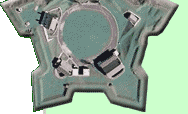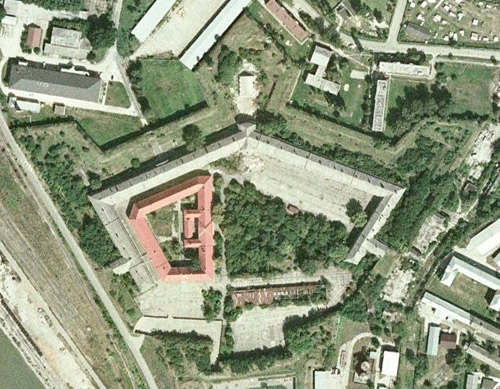
 |
 |
Fortress of Komarno Slovakia
|
 |
 |
 |
 |
 |
||
 |
At the confluence of the mighty Danube and not-quite-so-mighty Vah rivers sits Komarno. Settlement at this site began in the Neolithic Period, and as is the case for many cities in the region, Komarno has been the property of a great many competing civilizations over the past few thousand years, including the Celts, Romans, Goths, Slavs and Magyars. Hungarian King Stephen I (975-1038) built a castle at Komarno, which was strengthened in the 12th century. During the reign of Holy Roman Emperor Ferdinand I (1503-1564), the castle was further enhanced so as to make it more easily defensible. The Ottoman Turks, great fans of killing Habsburg-ruled peoples and taking their stuff, smirked at this rebuilt castle in a condescending manner and captured it in 1594, remaining there until 1599. The Habsburgs, by the same token, were great fans of killing Turks and taking their stuff. In the mid-17th century the fortification at Komarno was further enhanced to take advantage of the latest advances in starfortery, and the Fortress of Komarno, as we see it today, was born. The new Fortress withstood repeated Turkish attacks well into the 18th century. Being on the Danube made Komarno an important fur and crafts through the 18th century, despite a breathtaking array of disasters: Floods, fires, cholera and plague epidemics, and two earthquakes (in 1763 and 1783) that completely destroyed the town didn't wreak quite enough havoc to sink Komarno. Extensive refortification of the town's defenses began in the early 19th century, but were interrupted by one of the revolts that took place in 1848 throughout Habsburg-dominated lands. The Hungarian Revolution proved to be a failed attempt at gaining independence from Austria. The Fortress of Komarno was the last bastion of Hungarian resistance against the Habsburgs, but was finally surrendered in 1849. The Austrians completely destroyed the town, and badly damaged the Fortress. Over the next several decades Komarno was used as an Austrian military base, and the Fortress' damages were completely repaired by 1876. Fortunately for just about everybody (unless you happened to be Habsburg royalty), the Austro-Hungarian Empire disintegrated as a result of the First World War (1914-1918). The new nation of Czechoslovakia was formed in October of 1918, with its southern border being the Danube River. This split Komarno in two, as part of the city was on the south bank of the river. Though now in Czechoslovakia Komarno still had a majority of Hungarians living in it: As a result of this, Komarno was handed over to Hungary in 1938. Germany occupied Komarno during the Second World War (1939-1945), using the town as a headquarters for the defense of oil refineries to the south. The Allies bombed Komarno on a few occasions during the war, destroying the bridges that connected the two sides of the city, and leaving most of the southern portion of the town in ruins. The conclusion of the war saw Komarno once again being made part of Czechoslovakia, on March 30 1945. Extensive reconstruction of the city commenced, focusing particularly on its shipyards. Today, Komarno is one of the largest ports on the Danube, shipping oil and other products throughout the region. The Fortress of Komarno is open from March through October for tours. |
 |
 |
||
|
|
|||||||
Info Source 1
Info Source 2
Info Source 3
Info Source 4 Info Source 5 Info Souce 6 Info Source 7 Info Source 8 Thanks to Google Maps for the image! ©2010 starforts.com |
 |